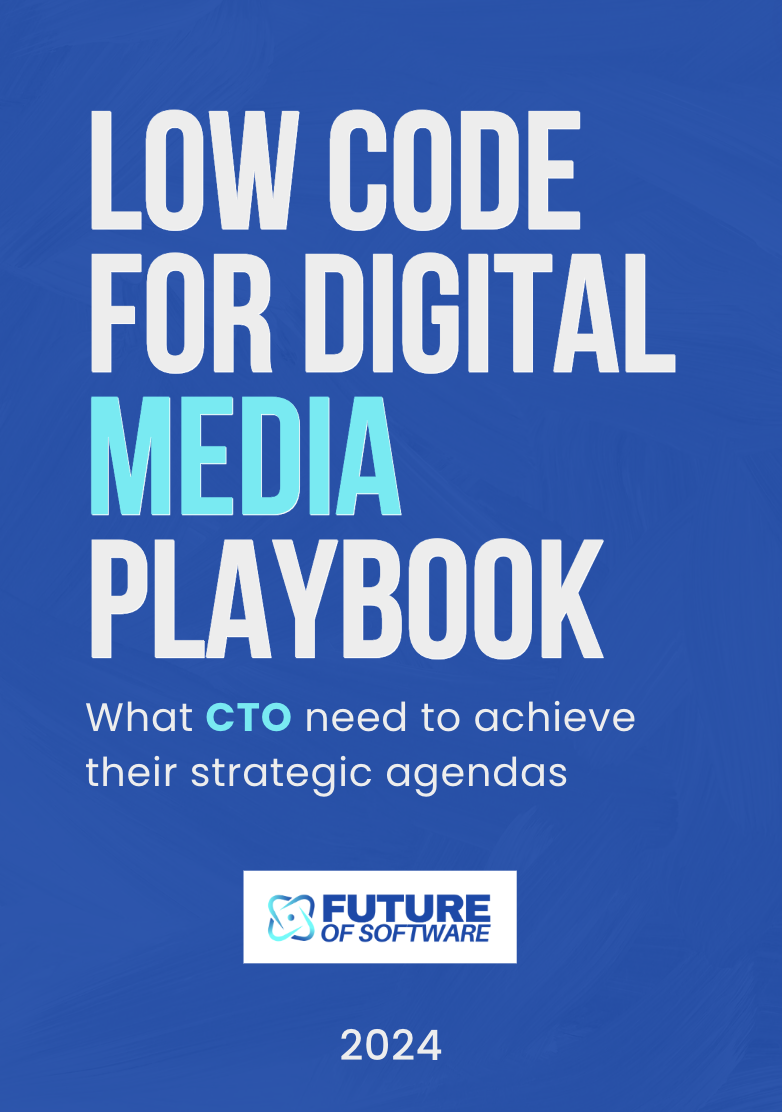
Understanding the Headless CMS Concept
What's This Headless Stuff All About?
Okay, imagine this. You've got a CMS but you're thinking: "I need to make my content more flexible and dynamic." Enter the concept of a headless CMS. Now, it might sound intense, but it’s not as scary as it seems. It's more about giving your front-end developers the freedom to experiment and enhance user interfaces without the usual backend constraints. Here's the lowdown. Traditional content management systems like WordPress typically combine the backend (where you manage your content) with the frontend (what the users see) all in one. This setup is straightforward and works incredibly well for many platforms. But here's where a headless architecture steps in and takes a different approach.Breaking Free: Headless Architecture
So, what's headless? Think of it as separating the backend (where you manage all your content) from the frontend display (how users see it). It's like taking apart your LEGO house to make your dream castle without sticking to the original design. Now, if you're wondering how this magic happens, it’s all thanks to APIs. They bridge the gap between the backend, where your content sits, and any frontend application or device you want. And guess what? WordPress can play in this space too with its REST API, turning it into a headless CMS. Why does this matter? Well, it gives you the power to push your content to different platforms—whether it's a website, mobile app, or even a smart fridge. With APIs, WordPress becomes your content hub, delivering data to any frontend you want. To dig deeper into Exploring WordPress as a Headless CMS, you can check that out for more insights. But hey, stick around as we explore the twists and turns WordPress has journeyed through to reach the headless aisle.WordPress Evolution: From Traditional to Headless
Transition to WordPress as a Headless CMS
Historically, WordPress has been a popular choice as a traditional CMS due to its user-friendly interface and versatility. However, as web developers and content creators seek more dynamic solutions, WordPress has evolved, embracing the headless CMS architecture. This shift allows developers to separate the frontend presentation layer from the backend content management, facilitating the use of various front-end technologies like React, Angular, or Vue.js. Moving on from its traditional format, WordPress now plays well in the sandbox of headless architecture. This is a game changer for developers looking to build high-performing, scalable web applications while maintaining the flexibility of WordPress. By leveraging the WordPress REST API, data can be accessed and integrated into any front-end framework of choice, enhancing both performance and user experience.From Monolithic to Headless
The transition from a monolithic system to a headless setup marks a significant evolution in speech. Traditional WordPress sites operate on a monolithic architecture, where the back-end and front-end are tightly coupled, meaning that changes in the back-end directly affect the front-end and vice versa. The headless setup, however, permits more creativity and resilience as the two layers operate independently. In this setup, developers aren't boxed into the constraints of PHP-based theming that WordPress traditionally required. Instead, they can build custom front-end experiences while still utilizing WordPress's robust content management capabilities. This is particularly beneficial for developers who desire more flexibility and control over their site's design and functionality without sacrificing the strengths of WordPress as a CMS.Challenges on the Journey to Headless
Transforming WordPress into a headless CMS isn't without its bumps. Developers may encounter hurdles like increased complexity in setting up the initial architecture, managing multiple frontend-backend integrations, and potential performance bottlenecks if not properly optimized. Moreover, the need to keep content and presentation layers in sync can add an extra layer of management for the development team. Despite these challenges, the advantages of using WordPress as a headless CMS often outweigh the drawbacks, especially as businesses aim to serve content across multiple channels and devices. For those willing to invest in the transition and maintenance, the benefits include a faster, more responsive site, improved scalability, and potentially better SEO performance. For further exploration into how headless WordPress is shaping the future of content management, consider checking exploring the future of serverless headless cms. This resource provides additional insights into the trajectory of headless technology and its implications on CMS strategies.Building the Future
As WordPress continues to pivot towards a headless architecture, it's clear that this approach will define a new era in content management systems. The rise of JAMstack (JavaScript, APIs, and Markup) as a prominent web development architecture plays a pivotal role in this transformation. By adopting headless structure, sites can benefit from enhanced security and performance, thanks to smaller operational footprints and the use of static site generation when possible. In conclusion, WordPress as a headless CMS opens up a raft of possibilities for developers looking to innovate their frontend interfaces without compromising on content management capabilities. The ongoing trends suggest a vibrant future for WordPress in a headless ecosystem, one that's sure to appeal to developers seeking flexibility and power in their web solutions.Benefits of Using WordPress as a Headless CMS
Why WordPress Shines as a Headless CMS
Switching gears from traditional WordPress to a headless setup can feel like a leap, but it's one that brings a whole new level of flexibility and power. Imagine being able to serve your content across multiple platforms with ease, thanks to the WordPress API. This is where the magic happens. By decoupling the frontend from the backend, WordPress becomes a powerhouse for content management, allowing developers to create unique experiences without being tied down by the usual constraints.
Speed and Performance Boosts
One of the biggest perks of using WordPress as a headless CMS is the performance boost. With a traditional WordPress site, you're often dealing with server-side rendering, which can slow things down. But with a headless setup, you can leverage static site generators or JavaScript frameworks like React or Vue to build your frontend. This means faster load times and a snappier user experience. Plus, the use of REST API allows for seamless data fetching, making your website feel more like a native app.
Flexibility and Customization
Headless WordPress opens the door to endless possibilities. Want to create a mobile app that pulls content from your WordPress site? Easy. Need to integrate with other systems or APIs? No problem. The decoupled architecture means you're free to choose the best tools for the job. Developers can focus on building the frontend with their preferred technologies, while the backend remains a solid content management system.
Enhanced Security
Security is always a concern when it comes to websites. By going headless, you're adding an extra layer of protection. Since the frontend and backend are separate, there's less risk of vulnerabilities being exploited. Your WordPress admin panel can remain hidden from the public, reducing the chances of attacks. This separation can give you peace of mind, knowing your content is safe.
SEO and Marketing Advantages
For those focused on SEO, a headless setup can offer some benefits. With faster load times and the ability to optimize the frontend without being restricted by WordPress themes, you can improve your site's SEO performance. Marketing teams will also appreciate the flexibility to push content across various channels without duplicating efforts. The predictive analytics capabilities of modern tools can further enhance your strategy, providing insights into user behavior and helping tailor content to meet audience needs.
In the end, using WordPress as a headless CMS is all about giving you the freedom to innovate and build experiences that resonate with your audience. Whether you're a developer looking for flexibility or a business aiming for better performance and security, headless WordPress offers a compelling solution.
Challenges and Considerations
Considerations Balancing The Headless WordPress Approach
When setting out to leverage WordPress as a headless CMS, it's vital to recognize not just its strong points, but also the challenges that may crop up along the way. Understanding these factors will help developers and users make more informed decisions, ensuring smoother integration and management.Technical Limitations and Adjustments
Traditional WordPress systems simplify themes and frontend integration, but shifting to a headless architecture might demand diving deep into the complex coding world. With the headless method, WordPress CMS serves mostly as a content repository, pushing data through the REST API or GraphQL API to a distinct frontend. This separation can mean developers need more technical know-how to bring everything together. Neglecting these technical hurdles could lead to snags in setting up and managing headless WordPress sites.Integration with Plugins
While plugins are a cornerstone of WordPress flexibility, not all of them seamlessly work with a headless setup. Plugins that interact directly with the frontend may pose challenges, as the CMS no longer handles presentation logic. Developers might have to find or create specialized API endpoints or headless-friendly alternatives to keep functionalities intact.Performance and Scalability
One significant perk of headless WordPress is boosting site performance. However, achieving this improvement means paying extra attention to frontend features. Pre-rendering content or using a static site generator can enhance speed, but it requires meticulous planning and execution. On the flip side, if not done right, a poorly implemented headless structure might lead to slower load times, impacting the overall user experience and potentially harming SEO performance.Security Implications You Can't Ignore
Security always ranks high on the list of considerations, and a headless architecture splits the backend from the frontend, which could expose more APIs and endpoints. With this increased surface area, developers must remain vigilant with security practices. Regular updates, authentication protocols, and continuous monitoring become crucial tasks, ensuring sensitive data and interactions don't fall prey to cyber threats.Setup and Maintenance Costs
Transitioning to a headless WordPress site incurs more than just initial setup costs. It requires ongoing maintenance and specialized developer skills, heading beyond just editing content or uploading images as with a traditional WordPress site. Making thoughtful decisions about when and how to adopt this approach can help balance these costs while harnessing the potential benefits. Reflecting on the journey from traditional WordPress to headless, staying aware of these challenges while also recognizing the advantages of headless CMSs paints a realistic picture. It's all about weighing the pros and cons and preparing to tackle obstacles head-on.Real-World Applications and Case Studies
Real-Life Stories of WordPress Going Headless
Switching to a headless CMS like WordPress can feel like a big leap, but let's look at some real-world stories where this approach has made a difference. It's not just tech giants making the move; businesses of all sizes are seeing the benefits.
How E-commerce Sites Benefit
Take e-commerce sites, for example. These platforms often need to deliver content quickly and reliably to users across the globe. By using WordPress as a headless CMS, these sites can serve content via a REST API, improving load times and user experience. This approach allows developers to use modern frontend frameworks to create fast and responsive websites, which is crucial for keeping customers engaged and reducing bounce rates.
Media Companies and Content Delivery
Media companies also stand to gain a lot. Imagine a news site that needs to update its content every minute. A headless setup allows the backend to focus on content management while the frontend delivers this content efficiently. The separation of concerns means that developers can optimize the frontend for performance without worrying about the backend, ensuring that users get the latest news without delay.
Case Study: A Global Brand
Consider a global brand that wants to maintain a consistent look and feel across its regional sites. By using WordPress headless, they can manage content centrally while allowing each region to tailor the frontend to local needs. This flexibility helps in maintaining brand identity while catering to local preferences, a win-win situation.
Challenges and Solutions
Of course, going headless isn't without its challenges. Developers need to manage multiple systems and ensure seamless communication between the frontend and backend. However, the use of APIs and modern plugins can streamline this process. It's all about finding the right balance between performance and complexity.
Final Thoughts
In a world where speed and user experience are paramount, using WordPress as a headless CMS offers a way to keep up with the demands of modern web users. Whether it's an e-commerce site looking to reduce load times or a media company aiming to deliver content faster, the benefits are clear. As more businesses share their success stories, it's becoming evident that headless WordPress is more than just a trend—it's a game-changer.















